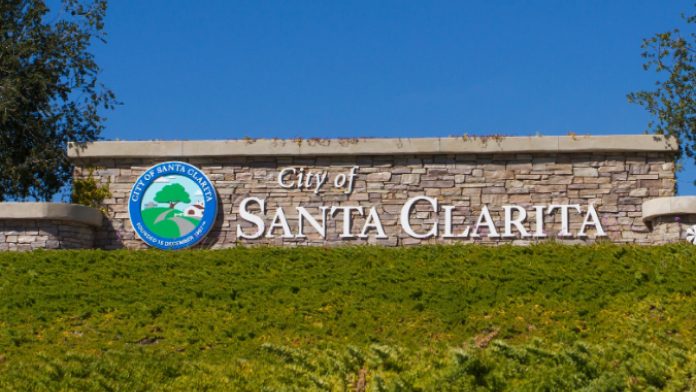Expert Insights
One of the biggest problems California and Santa Clarita face currently is the drug overdose epidemic. In fact, California has been among the worst states in the nation for addiction, and the rise of fentanyl secretly being combined with other drugs has been a recipe for disaster. But an unexpected result of this deadly trend is the growing problem of teen suicide and the connection it undoubtedly has with addiction. Suicide is also one of the largest causes of death among people who abuse drugs. and where there are high rates of drug abuse, there are also high rates of suicide and suicidal ideation. Unfortunately this has become a problem among California youth more so than adults. I believe we have to take drastic actions in order to put an end to the rising numbers of youth who abuse drugs and, as a result, either attempt or succeed in committing suicide. This is a trend we cannot allow to continue.
~ Natalie Baker
How Expensive is Drug Rehab in Santa Clarita?
The cost of Santa Clarita drug or alcohol rehab can vary. The cost can vary depending on the program you select and the following factors:3
Is it inpatient versus outpatient (treatment setting)?
Does the location offer amenities and features (upscale offerings)?
How long is the program (duration)?
Who will fund treatment (government, private pay, insurance)?
Is the facility on the waterfront, in the mountains, or urban (location)?
Usually, inpatient Santa Clarita drug and alcohol rehab is more costly than outpatient since there will be room and board expenses associated with your treatment. Some drug and alcohol rehabs in Santa Clarita also have more upscale offerings and amenities than others, such as private rooms, massage therapy, and spa treatments. These would also tend to have a higher price tag than a standard treatment if you chose them.
Are There Low-Cost and Free Drug Rehab Centers in Santa Clarita?
 You can find low-cost and free Santa Clarita drug or alcohol rehab by connecting with the City of Santa Clarita Community Services Division.4
You can find low-cost and free Santa Clarita drug or alcohol rehab by connecting with the City of Santa Clarita Community Services Division.4
Its main goal is to enhance residents’ quality of life by facilitating collaboration between the city and citywide resources to provide outreach for and enrichment programs to you. 4
Do Medicare and Medicaid Cover Addiction Treatment?
You can utilize Medicare and Medicaid to pay for drug and alcohol rehab if you qualify for either of these two programs. If the facility accepts these types of payments, Medicare and Medicaid can cover all or part of your treatment fees. Each program’s qualification requirements vary, and eligibility rules change annually based on your locale. You can discuss Medicare and Medicaid with your financial counselor at the drug and alcohol rehab you will attend to get more information about it.6,7
Does Private Insurance Cover Drug and Alcohol Rehab?
Another way to pay for Santa Clarita drug and alcohol rehab is by using private insurance.
If you have private insurance, you can utilize the phone number provided on the back of your insurance card to speak with someone about which drug and alcohol rehabs in Santa Clarita are covered. Most plans provide partial, if not full, coverage. So, using private insurance helps to keep your out-of-pocket treatment expenses down. When you speak with your insurance company, make sure to ask for an in-network Santa Clarita drug and alcohol rehab.3
You can find an affordable Santa Clarita drug and alcohol rehab that fits your needs whether you have insurance or not. If you can’t find one in Santa Clarita, other parts of California offer low-cost or free treatment as well.
How Does Santa Clarita Compare in Alcohol and Drug Use?
Options for drug rehab in Santa Clarita, CA, are plentiful. Santa Clarita drug and alcohol options include upscale amenities and holistic treatment approaches, and there are also more standard, low-cost options. So, no matter what type of treatment you are looking for, there’s a drug rehab and alcohol rehab in Santa Clarita for you.
Statistics from 2019-2020 show that of those aged 12 or older, estimated figures include:1

Past month illicit drug use: 5,391 individuals

Past year marijuana use: 7,133 individuals

Past month marijuana use: 4,798 individuals

Past month illicit drug use other than marijuana: 1,279 individuals
Estimated alcohol statistics from 2019-2020 show that those aged 12 or older:1
While these statistics cover some prevalence data within the state of California, Santa Clarita has a population of 224,593 people, and a number of those individuals have taken advantage of entering drug and alcohol treatment in Santa Clarita. This is good news in that it means people are seeking help and receiving treatment.2
Drug and Alcohol Laws in Santa Clarita, CA
One of the main reasons accidental drug and alcohol overdoses are not reported or 911 isn’t contacted by witnesses is fear of police involvement and arrest. A Good Samaritan Reporting Law exists in California and would apply to you if you lived in or sought treatment at a Santa Clarita drug and alcohol rehab.12
California’s 911 Good Samaritan Law: This law is designed to encourage you to call 911 if you need medical care or if you know of someone who needs medical care because of an overdose. It provides limited protection from arrest, charge, and/or prosecution for low-level drug violations. 12
Law Enforcement Assistance Diversion (LEAD): LEAD was started in November 2017 by the Office of Diversion and Reentry (ODR). Its goal is to reduce criminal justice interaction for those who need treatment because of misuse and/or overuse of alcohol and illicit substances. It utilizes a harm reduction model and connects you with evidence-based practices to help you with your recovery process.
In other words, LEAD is a pre-arrest, community-based diversion program. It would strive to divert you from the criminal justice system if you have repeated low-level drug-related offenses. For example, when you have early contact with law enforcement, you would relate to case management and social services instead of prosecution and potential subsequent incarceration time. Research shows that LEAD participants had a 58% less arrest rate than those who did not choose a diversion option and went through the standard criminal justice processing. 14
The Overdose Education and Naloxone Distribution (OEND): June 2019 marked the beginning of OEND by ODR. Its primary purpose is to lower the number of deaths related to opioid overdose by providing prevention education and training. If you are likely to be at the scene of an overdose and can respond, or if you are at risk of opioid overdose yourself, you would be eligible for OEND services.
OEND is also integral in helping you access free naloxone kits and harm reduction supplies. It provides technical assistance by teaching how to use the kits appropriately. Additionally, OEND runs naloxone access points (NAPs) where you can obtain naloxone refills or further distribution (if you need more naloxone), and you can seek help with overdose prevention and response training. You may also get a referral or be pointed in the right direction as to where to start if you are seeking treatment or to have a lifestyle change.
Popular Alcohol and Drug Rehab Centers in Santa Clarita, CA
There are several options for drug and alcohol rehab in Santa Clarita. The following are a few highlights:
Action Family Counseling
Action Family Counseling is a Santa Clarita Drug and Alcohol Rehab that provides detox and inpatient services. The facility boasts treatment for co-occurring conditions along with alcohol and drugs. It takes private insurance and provides self-pay options.
Common Bond Rehab Center
Common Bond Rehab Center Inc. offers intensive outpatient treatment (IoT) for both drugs and alcohol. This treatment facility boasts easy access to the freeway, minutes from the San Fernando Valley, Simi Valley, and Antelope Valley.
As an outpatient drug and alcohol rehab in Santa Clarita, you can continue to participate in your daily life while receiving treatment. This center offers treatment during the day and evening hours, so if you have responsibilities at school, work, or home, they can go unhindered. You can also practice what you learn in treatment during your daily life because of the flexible scheduling.
The program includes individual counseling, family group therapy, group therapy (alcohol and drugs), aftercare, and co-occurring conditions. Private insurance is accepted, or you may be able to negotiate self-payment plans.
Santa Clarita Medical and Mental Health Services
Santa Clarita Medical and Mental Health Services provides alcohol and drug rehab services and serves as a detox. You may also receive outpatient services if your situation warrants it. Other services are provided by this Santa Clarita drug and alcohol rehab opioid treatment and dual condition treatment.
This Santa Clarita drug and alcohol rehab accepts private insurance and payment arrangements. It accepts Medicaid and provides financial aid should your situation qualify.
Oaks of Hope
Oaks of Hope is a drug and alcohol rehab in Santa Clarita, CA, that focuses on treating those who identify as Christian and has a faith-based approach. It is also credentialed to treat dual diagnoses.
Oaks of Hope provides detoxification and inpatient programming. Treatment includes group sessions, couples’ treatment, and individual therapy. If you or a loved one is pregnant and need detoxification, you may go to Oaks of Hope for this service. Most private insurances are accepted, and Oaks of Hope can make payment arrangements.
Divinity Recovery Detoxification Center
Divinity Recovery Detoxification Center is in Santa Clarita and is part of a network of other services provided by Divinity Recovery. There are several Divinity Recovery centers across Woodland Hills and San Fernando Valley.
Once safely detoxified at the Santa Clarita location, you would be able to transfer to the proper level of care for the next step in your treatment process. Divinity Recovery provides a partial hospitalization program (PHP), intensive outpatient program (IOP), outpatient treatment program (OP), individual and group therapy, medication management, and transitional sober housing options. Other offerings include recreational activities, education, career planning, and complementary and alternative modalities.
Divinity Recovery accepts most major insurances.
The Rehab Process: What to Expect
If you’re not sure what to expect at an alcohol and drug rehab in Santa Clarita, it’s understandable.
Each accredited rehab facility follows general protocols and procedures while still uniquely conducting itself in a manner focused on your individual care. Regardless of which Santa Clarita alcohol and drug rehab you choose, you can expect evidence-based best practices. These would include therapies such as individual and group counseling, family counseling (if your situation warrants it), and a supportive environment that assists you with your long-term sustained recovery.8
Intake Assessment
You can receive a substance abuse assessment through a treatment program or your doctor. If you choose to have a Substance Abuse Assessment by your primary care physician, make sure that your doctor has some background in substance abuse treatment, preferably some specific training or credentials in the field. Otherwise, you can schedule an intake appointment with a Santa Clarita drug or alcohol rehab. They will conduct an assessment at that time.8
When you arrive at the facility for your intake appointment, you are evaluated and screened by the clinical staff at the treatment center. If you require medically assisted treatment (MAT), the medical staff may need to monitor your intake. This is because MAT can become addictive and can be dangerous if you have certain health conditions. So, physicians and medical staff will need to learn about your background before starting MAT and your history of drug use.9
To be admitted to a Santa Clarita drug or alcohol rehab, you need to meet certain eligibility requirements. These are based on your:8,9
- Willingness and motivation to take recovery-related actions
- Desire to recover
- Your drug use and addiction history
- Past use of drugs and alcohol
- Number of previous recovery attempts
This information will be utilized as a gauge for your potential success in treatment and any treatment planning so that you can have a tailored treatment experience. 8,9
Admission to an outpatient treatment program is also based on your addiction severity level. For example, if it is determined that you need an inpatient detox or inpatient services for safety reasons or that outpatient services may not be appropriate for you, you may receive a referral to inpatient treatment.8
You may also be asked to:8
- Take a blood and urine sample for drug testing
- Provide information about your previous or existing mental health issues
- Complete a physical exam
This is not to shame you. Rather, it will help the intake professional determine the appropriate level of care for you and can work with you to create an initial treatment plan.8,9
If the facility is state-funded or is a Medicaid- or Medicare- only program, you would need to be covered by either program or be eligible for either one.6,7
If the facility is a private-pay or accepts insurance, they will ask you for your insurance information or discuss financing options with you. Sometimes the financial component is done separately from the substance abuse assessment, and sometimes it is discussed at the time of assessment. It is important for staff to be able to assist you and facilitate financial discussion early on so there is clear communication on your ability to receive services at their location.3
Medical Detox
Medical detox may be necessary for your safety during the detoxification process. This is where credentialed medical professionals supervise your detox to help you remain as comfortable as possible so that withdrawal symptoms are minimized and to reduce any medical complication risks.
Depending on the main substance(s) that you have used, there might be potential health risks while you detox. Alcohol, benzodiazepines, and using and mixing multiple substances would be examples of risky substances to detox on your own.8
Also, if you have an underlying medical condition or co-occurring conditions, a medically monitored detox may be deemed necessary and appropriate in your case.8
Please note that medical detox does not replace comprehensive addiction treatment. Its role does not address underlying factors that may have contributed to your need to seek treatment at a Santa Clarita drug and alcohol rehab.8
Inpatient Drug Rehab in Santa Clarita, CA
When you enter inpatient rehab, it involves living at the treatment center for the length of your program. This may last anywhere from 30 to 90 days. Sometimes, it may last longer than three months if deemed necessary by your treatment team. Research shows that longer rehab stays are associated with better treatment outcomes.8
When you are at the Santa Clarita drug and alcohol rehab, you will complete your intake paperwork. Staff will search your belongings for unapproved items such as:8,9
- Drugs
- Alcohol
- Weapons
- Paraphernalia
This supports treatment success and helps to ensure the safety of yourself and others in the program with you. 8,9
A treatment professional will conduct an assessment. Once that is completed, the information collected will be utilized to create an individual treatment plan to meet your needs.
This plan is a dynamic document and will be adjusted throughout your stay to reflect what you’re working on. Your treatment plan often includes more than one approach and treatment modality. Some examples are: 8
- Individual therapy
- Family counseling
- Group therapy
- Relapse prevention classes
- Drug education classes
- Aftercare planning
- Peer support meetings
- MAT or medication maintenance
Some programs have a holistic approach and offer experiential modalities such as:8
- Yoga classes
- Acupuncture
- Art therapy
- Play therapy
- Music therapy
- Equine therapy
- Meditation classes
The treatment modalities and planning will depend on Santa Clarita’s drug and alcohol rehab’s philosophy and approach to treatment.
Stepping Down to Outpatient Rehab
Research shows that if you receive treatment along a continuum of care, recovery success rates improve. A continuum of care typically starts to start with an intake assessment and then usually progresses from:8
- Inpatient or residential rehab
- Outpatient rehab
- Community peer support groups
Sometimes step-down care is utilized to describe phases in the continuum of care.
For example, after inpatient drug and alcohol rehab, you may “step down” to an outpatient program such as a partial hospitalization program (PHP), intensive outpatient treatment (IoT), or supportive outpatient program (SOP).8
PHP, IoT, and SOP are all provided on an outpatient basis. Services would be provided by the treatment program, along with creating an outpatient-specific treatment plan with a credentialed professional.8
The main differences between PHP, IOP, and SOP are:8
- Number of visits per week
- Treatment duration (length)
Partial hospitalization programs usually last 30 days and meet 8 hours daily during a 5-day week.
IoT typically is three days per week, three hours per day, and lasts 6-8 weeks. Sometimes facilities can offer either a day IOP option or a night IoT option. This is very helpful if you work or have other responsibilities, and the program can accommodate your schedule. 8
SOP is usually long-term care determined by your individual needs and what your credentialed professional’s treatment recommendations are. SOP can take the form of going to continuing care (CC) group one time per week for one hour, up to 12 months.8
SOP can also be in the form of seeing a professional on a one-on-one basis to address your life circumstances and specific stressors that come up in your daily life.8
You may end up stepping down from inpatient treatment to PHP or IOT, or OP. It’s also possible you may not need all three outpatient levels of care.
To decide what step-down program is best for you, discuss it with your treatment team and loved ones. Consider your ’at home’ situation. For example, are you starting a new job and needing intensive support as you leave an inpatient treatment setting? On the other hand, are you returning to an old job where you are supported and established and just need one time per week support?
Regardless of your step-down decision, please note that research supports completing a continuum of care for long-term, sustained recovery.8
Aftercare and Relapse Prevention
Upon completing addiction treatment, it’s important to understand that recovery is a lifelong process. As such, make sure you have an aftercare and relapse prevention plan in place. 8,10
You can create this with your treatment provider if you’ve stepped down to PHP, IoT, or SOP. Wherever you have decided to step down will serve as part of your aftercare treatment once you have completed your inpatient Santa Clarita drug and alcohol rehab program. 8,10
Relapse prevention plans would include a list of your:8,10
- Triggers
- Sober support system (people you can call during cravings)
- Emergency contacts (medical)
- New behavioral strategies
- Tools and techniques to support recovery mindset
- Peer support meeting addresses & times
In addition to your step-down treatment, you may also want to supplement with other forms of support such as 12-step programs or non-12-step programs: 8,10
- Narcotics Anonymous (NA)
- Alcoholics Anonymous (AA)
- SMART Recovery
While these support groups don’t replace or constitute substance abuse treatment, they offer support from others who understand what you may be going through. So they can offer you guidance and support. 8,10
Factors to Consider When Choosing a Santa Clarita Drug Rehab
The following are several items to consider when choosing the right Santa Clarita drug and alcohol rehab:
Treatment Philosophy
Santa Clarita drug and alcohol rehab can have different approaches and/or philosophies. For example, a faith-based rehab would have a spiritual approach to recovery, while a holistic rehab would include modalities such as acupuncture and yoga.
Inpatient or Outpatient
Receiving an evaluation through your healthcare provider or scheduling a substance abuse assessment can help you decide which is right for you. Deciding this will help you narrow your choices.
Cost
When choosing a Santa Clarita alcohol and drug rehab, consider the cost. There might also be financing options available to you by the rehab.
Insurance
If you have private drug and alcohol rehab insurance, you can contact your insurance company to request assistance locating an in-network program that accepts your provider and plan
Peer Support
If you find attending peer support meetings is a valuable part of your recovery, you may want to choose a Santa Clarita drug and alcohol rehab that integrates peer support meetings into treatment plannin
Visitor Policy
If family visits during your drug and alcohol rehab in Santa Clarita are important to you, then you can research visitor policies to help decide which one fits best for you and your loved ones.
Features and Amenities
Drug and alcohol rehab in Santa Clarita’s features and amenities are a priority to some, while others are less concerned about them. You can research the features offered at the Santa Clarita drug and alcohol rehab, such as pools, massages, private rooms, and more.
What to Look for in a Quality Drug Rehab
High standard of care and quality treatment programs would include items such as:8,9,10
Program Accreditation
Santa Clarita drug and alcohol rehabs can be accredited by the Commission on Accreditation of Rehabilitation Facilities (CARF) or the Joint Commission (formerly known as JCAHO). Accredited programs go through a rigorous process to achieve this credential by showing that they are providing the services they tout, and they are placing patient care and your success as a top priority.
Staff Credentials
Staff at drug and alcohol rehabs in Santa Clarita should be properly credentialed. Credentialing requirements differ based on the modality the practitioner offers. Having credentialed staff on board ensures that they have completed the required amount of training and completed appropriate exams required by their overseeing boards.
Individualized Treatment Plans
While Santa Clarita alcohol and drug rehabs welcome more than one person at a time for treatment, they should provide an individualized approach. Having an individualized treatment plan would allow this to occur. For example, if you are married and have children, your individualized treatment plan would include addressing your communication and relationship with them. If you want to return to school, your individualized treatment plan will cover the steps you can take for this to happen.
Staff-to-Patient Ratio
This may be a high priority to some and not so much to others. You may do well in large groups, or you may prefer a smaller, more intimate number of people at your Santa Clarita drug and alcohol rehab. A great middle-ground may be a rehab that has large didactic and educational sessions with smaller group sizes. Ultimately, consider the environment you feel you will thrive in during your treatment.
Payment Options There are numerous options to cover your treatment outside of the state-funded or private insurance options. Consider applying for grants, treatment center scholarships, asking for donations, creating a personal fundraising page, or seeking out centers that offer a sliding fee scale or financing opportunities.
Treatment Services
Finding the right treatment option is vital to gaining success in combatting alcohol and drug use. It is essential to research the many options and weigh your current situation in making a decision. Treatments vary (e.g., medication-assisted therapy, cognitive behavioral therapy, holistic therapy, etc.), and the success differs based on the person.
Access to On-Site Medical Care
Whether you have co-occurring mental health or medical condition, you may need to have access to a medical doctor/physician or psychiatrist at your Santa Clarita drug and alcohol rehab. This is important to research and discuss with the treatment facility you are considering. If you prefer treatments such as acupuncture, you will want to find a facility that offers this modality.
Use of Evidence-Based Practices and Therapies
If the Santa Clarita drug and alcohol rehab is accredited with credentialed professionals, they will typically utilize evidence-based practices and therapies. These are modalities that are well researched by subject matter experts in the field and have withstood the test of time. An example of this would be cognitive-behavioral therapy (CBT), which is effective in the treatment of substance use.
Aftercare Planning
Treatment programming usually covers aftercare planning. It may be very important to you to have specific directions and structures in place once you complete your Santa Clarita drug and alcohol program. Research shows that if you engage in the continuum of care, treatment outcomes tend to be better. Hence, aftercare planning should be a priority in the next step for you along the continuum of care
Alumni Programs
Many outpatient and inpatient rehabs will offer alumni programs. For example, an IoT may allow alumni to have a monthly gathering or meeting, a reunion of sorts, to stay in touch with each other. They may also allow alumni to host a 12-step or other peer-support group on their property at times when there are no scheduled treatments or space available. This allows alumni to support each other post-treatment.
This list is thorough but not all-inclusive. You may have other priorities before deciding which Santa Clarita drug and alcohol rehab you will attend. You can add to this list and prioritize what you are looking for by numbering it.
You can also include your loved ones in the decision and ask them to add to the list. If you need assistance deciding, you can reach out to your PCP or a facility and schedule an assessment with a credentialed professional.8,9,10
Should I Travel to Santa Clarita, CA for Alcohol and Drug Treatment?
 Santa Clarita, CA, is just north of Los Angeles and is known for the Six Flags Magic Mountain theme park. If you, your family, and your friends enjoy theme parks, this is a major attraction.
Santa Clarita, CA, is just north of Los Angeles and is known for the Six Flags Magic Mountain theme park. If you, your family, and your friends enjoy theme parks, this is a major attraction.
Six Flags Hurricane Harbor is just adjacent to that and is a great summertime visit. It boasts a wave pool along with many tall slides since it’s a premier water park.
Santa Clarita also is the home of prehistoric stone formations of Vasquez Rocks Natural Area Park. This park has served as a backdrop for several films.11
If you like the beach and the ocean, Ventura Beach and others are approximately one hour’s drive from Santa Clarita. You can enjoy the day in the sun and return to Santa Clarita later in the evening or stay for a weekend.11
The climate in Santa Clarita is often referred to as “mild Mediterranean,” and the city has mountains and nature trails if that’s what you enjoy.11 With hiking-friendly weather for the bulk of the year, if you enjoy recreational activities outdoors, you may want to consider traveling to Santa Clarita, CA, for drug and alcohol rehab.
Neighborhoods in Santa Clarita to Consider for Treatment
Santa Clarita is known for its small, suburbia feel with all the access to a big city such as Los Angeles and a day or weekend trip to the beach.
Some neighborhoods to consider in Santa Clarita would include Solemint. This area earned its name because it’s located between the Soledad and Mint Canyons. This region is relatively small and quiet, with the Santa Clarita River running through the middle. If you love nature, this would be an area to consider.
If theme parks do it for you, then consider Valencia. This is where Six Flags Magic Mountain Theme Park is located. Since it’s a more populated area of Santa Clarita, you would be able to find more community support and 12-step groups.
Resources
- Substance Abuse and Mental Health Administration. (2021, December 13). 2019-2020 NSDUH State-Specific Tables, California.
- United States Census Bureau. (2021). QuickFacts Santa Clarita City, California.
- Findtreatment.gov. (2019). Paying for Treatment.
- City of Santa Clarita. (n.d.). Community Services.
- Findtreatment.gov. (n.d.). Find a Treatment Facility Near You.
- Medicare.gov. (n.d.) Get started with Medicare.
- Medicaid.gov. (n.d.). Medicaid & CHIP in Colorado. California | Medicaid.gov
- Substance Abuse: Clinical Issues in Intensive Outpatient Treatment. Treatment Improvement Protocol (TIP) Series, No. 47. Center for Substance Abuse Treatment. Rockville (MD): Substance Abuse and Mental Health Services Administration (US); 2016.
- Provider’s Clinical Support System (2017). MAT Training for Medication Assisted Treatment.
- Substance Abuse and Mental Health Services Administration (US). Facing Addiction in America: The Surgeon General’s Report on Alcohol, Drugs, and Health [Internet]. Office of the Surgeon General (US). Washington (DC): US Department of Health and Human Services; 2016 Nov.
- City of Santa Clarita. (n.d.). City Parks and Facilities.
- California Legislative Information. (2012). AB-472 Controlled Substances: Overdose: Punishment.
- California Legislative Information. (n.d.). Health and Safety Code- – HSC.
- Health Services Los Angeles County. (2019). Harm Reduction and Community-Based Diversion.



